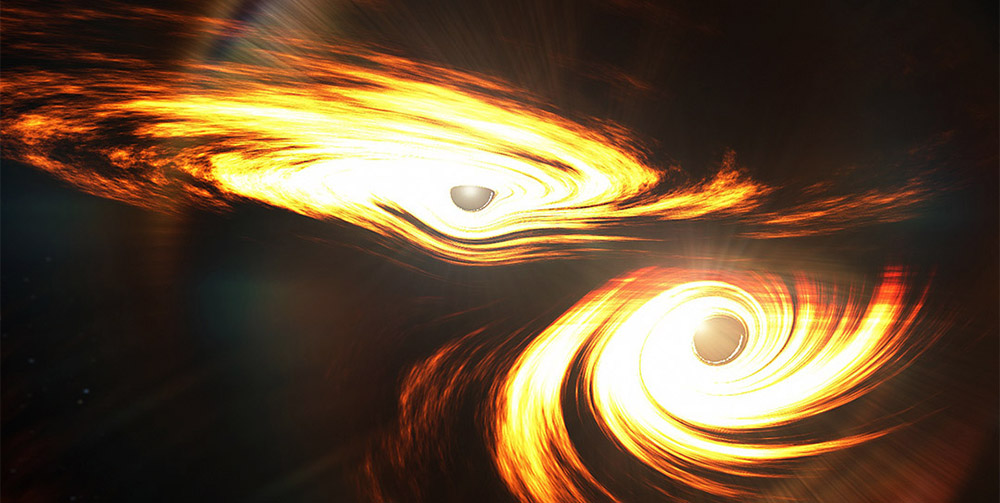Eccentric giants: The largest collision between two black holes to date may be the first known eccentric collision of such a gravitational giant planet. This was suggested by agreement between the gravitational wave data and model simulations. If confirmed, this could explain why black holes are larger than current theory allows. Because then they could receive Mass from outside beforehand.
In May 2019, the gravitational wave detectors of the LIGO and Virgo observatories picked up a signal unusual event employment. Because in GW190521, two black holes apparently merged, and they were heavier than they should be with 85 and 66 solar masses. Because according to the current theory, there can be no black holes in the range from 65 to 120 solar masses. The reason: supernovae do not leave such heavy traces behind, and if a star collapsed directly into a black hole, at least 120 solar masses would remain.

But how is GW190521 explained then? So far, astrophysicists can only speculate. Some doubt the effect cosmic expansionOthers argue that it is possible that such “super” black holes consist of several, successive mergers grow up. Favorable conditions for this can be found in dense star cluster Or prevail in the middle of galaxies.
Was the collision eccentric?
Gayatri of the University of Florida in Gainesville and colleagues may have found a possible indicator of such a hierarchical fusion at GW190521. They specifically looked for evidence that the two black holes orbited each other in eccentric orbits before colliding. Because this is an indication that the binary system is vulnerable to external perturbations, such as those that occur in dense star clusters.
However, the problem is that it is very difficult to prove that the orbits are eccentric using gravitational waves. Because in the signals, which usually last less than a second, no clear wave feature has been found so far that would detect such an aberration. It is therefore not possible to determine the orbital shape of each of the black holes using current analysis methods.
match found
So Gayatri and her team took a different approach: They simulated 611 eccentric mergers and 920 non-eccentric mergers of black holes of different masses in the model. They also reconstructed the gravitational waves released in the process and searched for matches with GW190521.
The result: the closest match between model and observation was achieved in a scenario in which two black holes orbit each other in highly eccentric orbits. According to the data, the deviation can be around 0.69. For comparison, Earth’s orbit has a value of 0.017 on a scale from zero to one, which is an extremely eccentric orbit for a recently discovered orbit. outer planets is 0.96.
Possible indication of hierarchical mergers
If confirmed, GW190521 could be the first evidence of a binary black hole merger with eccentric orbits. Additionally, Ghiathry and her team concluded from simulations that between eight and 13 percent of the gravitational wave events detected by LIGO and Virgo could arise from such eccentric collisions.
“This represents a major advance in our understanding of how black holes merge,” says co-author Manuela Campanile of the Rochester Institute of Technology in New York. At the same time, this could provide an indication that the unusually massive black holes of GW190521 are in fact the result of a hierarchical merger. According to the team, this scenario can lead to extreme skewness and high mass. (Natural Astronomy, 2022; doi: 10.1038/s41550-021-01568-w)
Coyle: Rochester Institute of Technology

“Total coffee aficionado. Travel buff. Music ninja. Bacon nerd. Beeraholic.”








More Stories
Coral Seeding: Artificial Insemination Makes Coral More Heat Tolerant
Fear, Anger, and Denial: How People Respond to Climate Change – Research
LKH Graz: Using radiation to combat heart arrhythmias